- Home
- Nikolai Gogol
The Nose and Other Stories
The Nose and Other Stories Read online
The Nose and Other Stories
Russian Library
The Russian Library at Columbia University Press publishes an expansive selection of Russian literature in English translation, concentrating on works previously unavailable in English and those ripe for new translations. Works of premodern, modern, and contemporary literature are featured, including recent writing. The series seeks to demonstrate the breadth, surprising variety, and global importance of the Russian literary tradition and includes not only novels but also short stories, plays, poetry, memoirs, creative nonfiction, and works of mixed or fluid genre.
Editorial Board:
Vsevolod Bagno
Dmitry Bak
Rosamund Bartlett
Caryl Emerson
Peter B. Kaufman
Mark Lipovetsky
Oliver Ready
Stephanie Sandler
■ □ ■
For a list of books in the series, see Series List
Published with the support of Read Russia, Inc., and the Institute of Literary Translation, Russia
Columbia University Press
Publishers Since 1893
New York Chichester, West Sussex
cup.columbia.edu
Translation copyright © 2020 Susanne Fusso
All rights reserved
E-ISBN 978-0-231-54906-6
Library of Congress Cataloging-in-Publication Data
Names: Gogolʹ, Nikolaĭ Vasilʹevich, 1809–1852, author. | Fusso, Susanne, translator.
Title: The nose and other stories / Nikolai Gogol; translated by Susanne Fusso.
Description: New York: Columbia University Press, [2020] | Series: The Russian Library | Translated from the Russian.
Identifiers: LCCN 2019053937 (print) | LCCN 2019053938 (ebook) | ISBN 9780231190688 (cloth; acid-free paper) | ISBN 9780231190695 (paperback; acid-free paper) | ISBN 9780231549066 (ebook)
Classification: LCC PG3333 .A6 2020 (print) | LCC PG3333 (ebook) | DDC 891.73/3—dc23
LC record available at https://lccn.loc.gov/2019053937
LC ebook record available at https://lccn.loc.gov/2019053938
A Columbia University Press E-book.
CUP would be pleased to hear about your reading experience with this e-book at [email protected].
Cover design: Roberto de Vicq de Cumptich
Book design: Lisa Hamm
For Joe
CONTENTS
Acknowledgments
Introduction by Susanne Fusso
Notes on the Translation
Table of Ranks
The Lost Letter
Viy
The Portrait (1835 version)
Nevsky Avenue
Diary of a Madman
The Carriage
The Nose
Rome (A Fragment)
The Overcoat
Notes
Acknowledgments
My first encounter with Russian literature was reading a collection of Gogol’s short stories called Tales of Good and Evil, translated by David Magarshack, that I checked out of the library when I was twelve or thirteen years old. I owe my life’s work to the enchanting spell it cast. I would like to acknowledge here the work of Magarshack, as well as other dedicated translators who opened up the world of Russian literature for me before I could read it in the original: Constance Garnett, Bernard Guilbert Guerney, and Andrew R. MacAndrew. I have been fortunate to have worked for over thirty years side by side with a brilliant translator of Gogol’s stories, Priscilla Meyer, professor emerita of Russian, East European, and Eurasian Studies at Wesleyan University. I offer my own contribution to “Gogol in English” with humble respect for these writers.
I am grateful to Stephanie Sandler, Ernest E. Monrad Professor of Slavic Languages and Literatures at Harvard University, and Christine Dunbar, editor of the Russian Library series at Columbia University Press, for suggesting this project to me. It has been a wonderful experience to engage with these stories in such an intimate way, and Christine has been a patient, astute, and supportive editor. Thanks also to Christian Winting, assistant editor at CUP, for his help and responsiveness. Ben Kolstad, Leslie Kriesel, and Mary Curioli provided expert project management and editing. I am also grateful to Roberto de Vicq de Cumptich for the beautiful cover design and to Lisa Hamm for the elegant book design.
It has been my great good fortune to have worked with some of the giants in the Slavic field early in my career, when I began my study of Gogol. Robert Louis Jackson, B. E. Bensinger Professor Emeritus of Slavic Languages and Literatures, Yale University, directed my doctoral dissertation on Gogol’s Dead Souls, and he continues to be a guiding light of interpretative brilliance for me. Yury Vladimirovich Mann of the Institute of World Literature in Moscow, whose lifelong study of Gogol is an awesome scholarly monument, extended his friendship and support to me when I was a young scholar, and he will always be one of my major inspirations.
Irina and Yuz Aleshkovsky, Sergei and Valentina Bunaev, Olga Monina, and Alexandra Semenova are dear friends who have taught me a great deal about Russian language and culture. Irina in particular has fielded numerous questions and shared her love for Gogol’s humor. Roman Utkin, assistant professor of Russian, East European, and Eurasian Studies, Wesleyan University, has been most helpful and encouraging about this project. My Wesleyan colleagues Nadja Akšamija, associate professor of Art History, and Francesco Marco Aresu, assistant professor of Italian, kindly responded to my questions related to Rome and “Rome.”
I am grateful to two anonymous readers for Columbia University Press for their helpful suggestions. My thanks are also due to Oliver Ready for his advice on the notes.
My students at Wesleyan always help me to read Gogol with fresh eyes. They are too numerous to name, but among recent students I would like to thank Austin Barvin, Foster Conklin, Sonja English, Najeeba Hayat, Sarah Jacobs, Tim Jambor, Miguel Pérez-Glassner, Allegra Ranelli, Eric Roe, Matthew Rubenstein, Olivia Siegal, and Molly Zuckerman for their enthusiasm and insight.
My thanks are due to the administration of Wesleyan University for its generous support of scholarship. I am grateful in particular to Marc Eisner, dean of the Social Sciences; Joyce P. Jacobsen, provost and vice president for Academic Affairs (now president of Hobart and William Smith Colleges); and Michael S. Roth, president, for their generosity and responsiveness.
As always Katherine Wolfe and Lisa Pinette of the Interlibrary Loan Department of Olin Library rendered invaluable assistance.
Kellyanne Foley keeps me moving no matter what, and I thank her for her friendship and expert care.
My brother Jim Fusso and brother-in-law Richard Barry are constant sources of kindness, love, and responsive reading.
My debt to my husband, Joseph M. Siry, Kenan Professor of the Humanities and professor of Art History at Wesleyan University, is immense. He has read every word of this translation and laughed in all the right places. I am endlessly grateful for his love and support.
INTRODUCTION
Susanne Fusso
Although Nikolai Gogol (1809–1852) brilliantly distinguished himself as a novelist, a playwright, and an essayist, it was his stories that stretched as a constant creative thread across the most productive years of his career, from 1831 to 1842. The stories display all the sparkling facets of his peculiar genius: the existential terror of a darkened church in which the power of Satan is brought to life to confront a solitary mortal; the zany humor of a nose that absents itself from the human face to have adventures of its own on the streets of St. Petersburg; and the philosophical probing into the questions of national identity that came into focus for one of the greatest writers in the Russian language only when he lost himself in
the ancient labyrinth of Rome.
Born in the province of Poltava (in what is now central Ukraine) to a landowning family, Gogol moved to St. Petersburg, the capital of the Russian Empire, in 1828 and began work at a low rank in the civil service. The move to St. Petersburg was associated in his mind with his aspiration to “make [his] name significant by means of some beautiful deed,” but whether that significance was to be achieved in public life, literature, or the teaching of history remained uncertain for him until the mid-1830s.1 In 1831–1832 he published his first major work of prose, the story collection Evenings on a Farm Near Dikanka, which was an immediate success. Its deployment of Ukrainian language, costumes, cuisine, and folklore was exotic and engaging for Russian readers. Gogol continued in this vein with the story collection Mirgorod in 1835, but at virtually the same time he published a very different collection, Arabesques. In Arabesques Gogol brought together essays on the teaching of history and geography, on modern architecture and painting, on the (western European) Middle Ages, and on Ukrainian folk songs, along with three stories set not in the Ukrainian countryside but in St. Petersburg: “The Portrait,” “Nevsky Avenue,” and “Diary of a Madman.” These stories, and two that came later (“The Nose” and “The Overcoat”), continued the literary investigation into St. Petersburg as a city of illusion and fantasy that was begun by Alexander Pushkin in “The Queen of Spades” (1834) and later continued by Fyodor Dostoevsky in works such as Crime and Punishment (1866).
Dividing his time in the next decade between Russia and Europe, particularly Rome, where the food, climate, and community seemed to encourage his creative energies, Gogol produced more stories—“The Carriage,” “The Nose,” and “Rome (A Fragment)”—while working on his plays, including the magnificent comedy The Government Inspector, and his magnum opus, the novel Dead Souls. Finally, as he brought Dead Souls to completion, he revisited and revised his earlier stories for publication in a four-volume collection of his works, published in 1842, the same year that Dead Souls appeared. This collection included one entirely new story, considered by many to be Gogol’s finest, “The Overcoat.” In his remaining ten years Gogol wrote no more stories. He published a collection of essays, Selected Passages from Correspondence with Friends (1847), and devoted himself to writing a continuation to Dead Souls, which was never published and much of which he burned before dying, essentially of starvation due to excessive penitential fasting, in February 1852.
This edition includes one story from Evenings on a Farm Near Dikanka (“The Lost Letter”), one from Mirgorod (“Viy”), the 1835 Arabesques version of “The Portrait,” and all of Gogol’s other stories in their later 1842 versions (with some censored passages restored, as has been the practice in modern Russian editions). This selection emphasizes the later period of Gogol’s story writing, so some richly rewarding stories such as “Ivan Fyodorovich Shponka and His Auntie” (from Dikanka) and “Old-World Landowners” (from Mirgorod) have been omitted. Russian editions often preserve the ordering of the stories as Gogol placed them in his 1842 collection (“Nevsky Avenue,” “The Nose,” “The Portrait,” “The Overcoat,” “The Carriage,” “Diary of a Madman,” and “Rome”), but I have followed a roughly chronological order. Although Mirgorod was published shortly before Arabesques, both in 1835, Gogol regarded Mirgorod as a continuation of Dikanka (1831–1832), so I have placed “Viy” immediately after “The Lost Letter” and before the stories from Arabesques. Unlike most English-language editions, this one includes “Rome.”
The common denominator of the stories in Dikanka is the human encounter with the demonic, treated sometimes humorously and sometimes with deadly seriousness. One of the shortest stories in Dikanka, “The Lost Letter,” serves as what seems to be a preliminary sketch for “Viy” in its depiction of a journey by a brave Cossack into hell itself. As with several of the stories in the collection, its status as oral discourse is foregrounded, as the narrator tells a tale from the colorful past of his own grandfather, who traveled to the underworld to play cards with witches. Many of the characters and situations in Dikanka, inspired by the folk tradition of the Ukrainian puppet theater, adhere to a stereotyped image of the happy, dancing, laughing people of what was then known as Little Russia that was tailor-made for the Russian metropolitan audience.2 This is exemplified by Pushkin’s patronizing praise of the Dikanka tales: “Everyone rejoiced at this vivid description of the singing and dancing tribe, these fresh pictures of Little Russian nature, this gaiety that is simple-hearted and at the same time sly.”3 For all his charm and bravery, the hero of “The Lost Letter” fits Pushkin’s stereotype of the cunning, witty, compulsively dancing Ukrainian.
Although “Viy” is also set in Ukraine, its hero, Khoma Brut, is not a stereotype. In fact, he is not much like any of Gogol’s other heroes. Self-reliant, resourceful, and blessed with a healthy sex drive, he represents a road not taken for Gogol, whose later works set in St. Petersburg or the Russian provinces offer no characters with this sort of vigor and common sense.4 When Khoma does dance, it is not in order to entertain an audience of condescending Russians but to taste the joys of life for one last time and to gather his strength for a monumental struggle with the powers of darkness. Despite its supernatural plot, “Viy” offers a richly textured picture of the daily life of seminary students and Cossacks and of the Ukrainian landscape. Along with “Rome,” “Viy” is one of Gogol’s most underrated works.
Most English-language editions of Gogol’s stories include the 1842 version of “The Portrait” rather than the one originally published in Arabesques in 1835. The influential critic Vissarion Belinsky, who was generally supportive of Gogol’s work and helped to make his reputation as a major Russian writer, harshly criticized the 1835 version of “The Portrait” as an unsuccessful attempt at the fantastic. As a result, Gogol extensively revised the story for the 1842 edition of his works. When he published Arabesques, Gogol was in transition from his earlier stories, in which witches and devils openly interact with mortals, to his later style, in which the supernatural and the demonic are encoded into a seemingly realistic milieu.5 In the 1835 version of the story, magical events occur with no possible rational explanation: The portrait appears in the main character’s lodgings despite the fact that no one brought it there, the man depicted in the portrait steps out of the frame and has a conversation with him, and the plot hinges on the intervention of the Antichrist into the world to break down the laws of nature. In the 1842 revision, Gogol added a plethora of naturalistic details and provided plausible realistic explanations for most of the seemingly supernatural events. The buyer of the portrait carries it home himself, the man emerging from the portrait turns out to be appearing in a dream, and the secret of the portrait is an aesthetic rather than a metaphysical one. Nevertheless, the story remains a fairy tale revolving around a mysterious portrait, and no amount of rationalistic hedging can disguise that fact. Whatever the merits of the two versions, however, the 1835 version of the story is not well enough known, and it is a good representation of Gogol’s Romantically-infused aesthetics at a pivotal moment in his career.6
All three of the stories in Arabesques, as well as the later Petersburg stories “The Nose” and “The Overcoat,” depict the individual moving in an urban landscape that is often unforgiving, for reasons of harsh weather, poverty, corruption, and social class. Both “The Portrait” and “Nevsky Avenue” involve artists, while in “Diary of a Madman” the hero, originally conceived by Gogol as a mad musician, is a downtrodden civil servant, like the hero of “The Overcoat.” Gogol never labeled these five stories as a “Petersburg cycle,” but it is understandable that this is how they have come to be known. Their interlocking themes and motifs—of city crowds, of insensitive office superiors, of beautiful but dangerous women, of the devil in everyday disguise, with a constant undercurrent of absurd humor even in the most serious situations—create a kind of super-story across the individual tales that belongs on the same level as Gogol’s majo
r longer works The Government Inspector and Dead Souls. Yet the last of these stories written, “The Overcoat,” harks back to “The Lost Letter” and “Viy” in its centering on the primal situation of a person lost in the darkness and seeing a light that… But readers should find out what happens next for themselves.
“The Carriage” is anomalous among Gogol’s stories for its provincial Russian setting and its seeming absence of any demonic undercurrent. Analysis or interpretation would cause it to disintegrate; as Lev Tolstoy said in 1909, it is “the height of perfection in its own way,” a seemingly trivial story that is nevertheless deeply satisfying. It is the summit of Gogol’s mastery of what can only be described by the oxymoronic term “understated hilarity.” The non-Russian reader will probably have to read it twice. Do it, it’s short.
Most English-language editions of Gogol’s stories do not include “Rome,” even though the author himself included it in the third volume of his four-volume collected works along with the other stories translated here (except for “The Lost Letter” and “Viy,” which were included in the first volume with Dikanka and the second volume with Mirgorod, respectively). He even accorded it a prominent position, as the last story in the volume, serving as a bookend along with the first story, “Nevsky Avenue,” which similarly centers around a young man’s encounter on a city street with a stunning embodiment of female beauty. There are many reasons for the omission of this story in English-language editions, even ones labeled as “complete.” It is subtitled “A Fragment,” and it certainly has no conventional plot with a beginning, middle, and end. It is true that Gogol seems to have planned a novel about Italian life, but by the time he published “Rome” that project seems to have been abandoned, and the “fragment” label is possibly designed to tease the reader into speculation, like the label “poema” (epic poem) that he gave his novel Dead Souls, written entirely in prose. In style “Rome” is quite different from the fleet comedy of “The Nose” or “The Carriage.” Its incident-free narrative unfolds in enormously long sentences and finely detailed descriptions of Parisian and Roman architectural interiors and exteriors and the landscape of the Roman Campagna. Yet as scholars such as Rita Giuliani and Michael Kelly have argued, “Rome” belongs with Gogol’s other stories, both because of thematic affinities (the urban landscape, the lure of feminine beauty) and because of the importance of the city of Rome as a locus for Gogol’s own aesthetic development as he worked on a style that would be adequate to his lofty plans for a continuation to Dead Souls.7 Gogol was at the height of his powers in 1841, when he completed Dead Souls, revised his earlier stories, and wrote “The Overcoat” as well as “Rome”; everything he wrote in that period is worthy of the serious reader’s attention. In this “fragment” Gogol seems to be reaching for a new mode of literary exploration (although it could be argued that conventional plot was never one of Gogol’s primary concerns, even in his most celebrated works). Many of Gogol’s friends in Rome were artists, and in this story he tries to capture in words the visual splendor of Rome’s art and nature, particularly the Campagna, so famous as a subject for painters like Claude Lorrain (Gellée). Gogol also tries to achieve an understanding of national identity and national difference on a large scale; his meditations on the fate and future of Italy and of the Italian people can also be read as allegories for the fate and future of Russia and its people. Even if Gogol’s reach arguably exceeds his grasp in this story, he achieves passages of gleaming beauty and penetrating analysis in the course of the attempt.

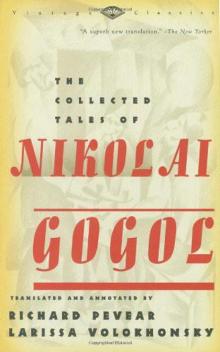 The Collected Tales of Nikolai Gogol
The Collected Tales of Nikolai Gogol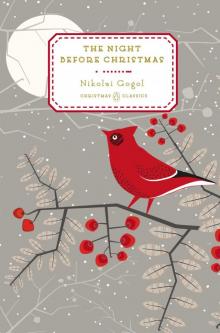 The Night Before Christmas
The Night Before Christmas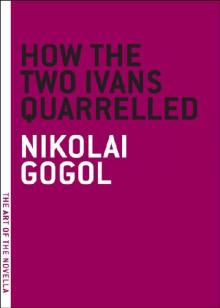 How the Two Ivans Quarrelled
How the Two Ivans Quarrelled Dead Souls
Dead Souls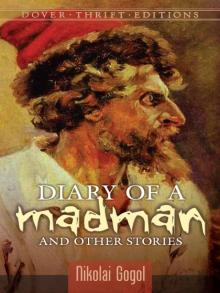 Diary of a Madman and Other Stories
Diary of a Madman and Other Stories The Nose and Other Stories
The Nose and Other Stories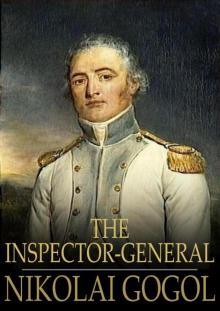 The Inspector-General
The Inspector-General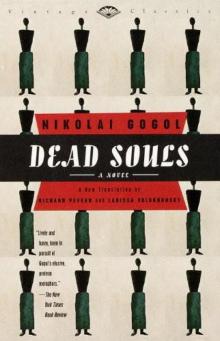 Dead Souls: A Novel
Dead Souls: A Novel